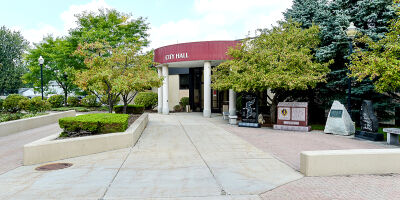STERLING HEIGHTS — The vision of where Sterling Heights may be headed — both in the next year and in the next 18 — became a little clearer after City Council members and administrators gathered June 11 for a special strategic planning session.
The planning session was a follow-up to a previous strategic planning session in January. To begin, City Manager Mark Vanderpool reviewed the results of Sterling Heights’ Visioning 2030 plan, adding that it “has served us well.” Vanderpool said the visioning plan transformed the city in multiple ways, from roads and parks and recreation to public art.
But he said it was time to start mulling a future Visioning 2040 plan, and consultant Becky Davenport was there to help.
“As a progressive city, we always want to be looking ahead the next 10, 15 years and make sure that we’re doing all that we need to do now to prepare the city and advance the city for the next generation,” Vanderpool said.
Davenport said some of the top focus words that city officials previously associated with a successful 2040 vision were “inclusive,” “safe” and “innovative.” And top trends included green spaces and a “15-minute city” model that prioritizes walkability.
City officials considered “big, hairy, audacious goals” that, according to Davenport, could be inspirational, stretchy, mission-aligned and action-oriented. Some of those goals that officials mentioned were enhancing quality of life, employment opportunities, safety and innovation.
Mayor Michael Taylor said he wanted to see innovation with electric vehicle infrastructure, and he mentioned how other communities are using blockchain and Web 3.0 technologies.
Councilwoman Maria Schmidt noted that the city’s population is aging, and not everyone is ready to embrace every innovation, “and we can’t make them feel left out.”
Taylor also expressed his interest in the city’s identity, noting that Sterling Heights, despite being more populous, doesn’t carry the broader recognizability that cities like Kalamazoo, Ann Arbor and Battle Creek carry.
“When you travel, you talk, ‘Where are you from?’ ‘Detroit.’ Right?” he said. “Nobody would say, ‘Sterling Heights,’ probably, unless they met somebody else who was from Michigan, right?
“I want people around this region to hear the name Sterling Heights and identify these things, like high quality of life, very safe, connected, engaged.”
Davenport said that while there is still time to work out the details of Visioning 2040, and it could take months to a couple of years, “2040 is not that far off.”
City settles on short-term priorities
Afterward, the officials talked about some goals they wish to see accomplished over the next year or 18 months dealing with sustainability, development and community.
Vanderpool said there were 15 short-term issues raised at the January meeting that the city didn’t have clear direction on. He wanted to take the top five or so and get started working on those over the next six months.
Assistant City Manager Jeff Bahorski challenged the City Council to view those 15 possibilities through the lens of the Visioning 2030 framework, which holds the city to be safe, inclusive, vibrant, progressive, active and distinctive. The vision’s principles also prioritize neighborhoods, schools, recreation, parks, pathways, destination spots, roads, green spaces, commercial centers, industry and entrepreneurs.
Five of the 15 items revolved around sustainability. Those policy options are requiring trees to be planted in rights of way, reducing lawn mowing, banning the paving of front yards, requiring businesses to recycle and having a waiver to allow homes to grow wildflowers or clover for lawns.
The development policy options were installing a south pathway to Moravian Park; installing more midblock pedestrian crosswalks; allowing detached dwellings as ancillary uses, also known as granny flats; changing or reducing tattoo parlor restrictions; and increasing low-income housing options.
The community policy options were creating more direct communication options with residents, implementing a system of wards that elected officials would be assigned to represent, enacting a responsible contract ordinance, creating a city identity and brand, and updating business licensing practices to waive fees for nonprofits.
City officials privately scored their priority levels for each item, and the results were tabulated. The six most popular items were right-of-way trees, waiving nonprofit fees, banning the paving of front yards, creating an identity, low-income housing and mid-block crosswalks. The ward system idea was the least popular.
Vanderpool said the city would focus on the top six ideas over the next six months. But he added that the city could still tackle some of the lesser priorities someday.
“It does not mean that we are not going to focus on these items. It just means that, at this point in time, they’re a little lower priority,” he said.
“Of course, City Council is going to have a chance to continue to champion some of these or all of them that you’re interested in. And you’ll have a chance again at strategic planning in 2023 to see if you can get these items up into the green.”
Taylor concluded by calling the meeting a success.
“It gives me the sense that we’re not just working regular jobs here,” he said. “We’re doing meaningful work that is important, that has a direct impact on 135,000 lives.”
Learn more about Sterling Heights by visiting www.sterling-heights.net or by calling (586) 446-2489.
 Publication select ▼
Publication select ▼






















